Aircraft buyers value the phrase “no damage history” so highly when searching for a flying machine to buy that it has caused a certain subset of aircraft owners and brokers to take sometimes drastic steps to cover up the fact that the airplane they want to sell has been damaged and repaired. After all, if the seller has to admit to a damage history, the value of the aircraft drops somewhat and some prospective buyers will simply not consider the airplane at all.
Logbook entries following major repairs are often so terse that a reader can’t figure out what work was actually done. Worse, no entry is made and no FAA Form 337 (Major Repair and Alteration) is filed. I’ve even seen owners take advantage of the stupid fact that aircraft and engine logbooks have no page numbers and razor out the page that describes significant repairs after an accident.
I started researching this article on the lies sellers and brokers tell about airplanes from a cynical perspective—retired after more than 40 years as an aviation attorney who too often met with aircraft owners who had been taken advantage of by unscrupulous sellers. I was also concerned by the rapid increase in aircraft prices over the last three years in a market with a small inventory and airplanes sometimes selling within hours of being advertised—often with the seller refusing to allow a prepurchase exam.
After talking with numerous A&Ps and IAs about their experience performing prebuy exams, I came away a little less cynical—they pointed out to me that my experience was skewed in that I only saw the worst-case scenarios—where a buyer had been taken so badly that they sought out an attorney.
The good news was that the maintenance techs I spoke with said that they rarely saw situations on prebuys where the seller was knowingly unloading a crummy airplane—most of the time the seller didn’t realize how bad things were because they had the same mechanic do the annual each year and things simply got missed.
Nevertheless, my conclusion after researching this article is that a prospective buyer should approach the purchase an airplane of interest from the perspective that it does have a damage history, especially if it is a tailwheel bird and/or over 30 years old. Hey, our airplanes are flown by amateurs who only take recurrent training once every two years and have a sad track record for landing in crosswinds.
I’ll say it up front—when it comes to buying airplanes, I’m paranoid. The question is whether I’m paranoid enough. I think that you should be as well. There are scoundrels out there willing to take advantage of a prospective buyer. Approach a purchase with the assumption that the airplane has a damage history and it’s your (and your maintenance tech’s) job to find out what it is and whether the repairs performed were such that you are not going to take a bath financially once you own the airplane.
Below, I’ll talk about types of damage history—some kinds actually increase the value of the airplane—and sales techniques to make an airplane look much better than it is.
I’ll emphasize right here that even with the sales techniques used on the internet, the hard and fast rules of protecting yourself as an aircraft buyer haven’t changed—and I’ll review those at the end of the article.
A PREBUY EXAMINATION
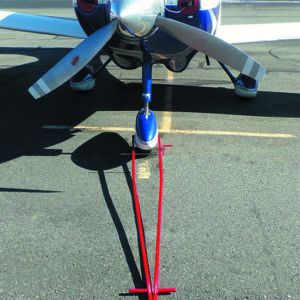
The fact that an airplane has been damaged and repaired affects its market value. Your task, along with your maintenance tech, is to conduct a thorough examination of your prospective airplane and all of its paperwork—logbooks, FAA file and title history. A major part of that process is a prebuy examination conducted by a maintenance technician that you, not the seller, select. A prebuy is not an inspection—that word has FAA meaning and includes a logbook entry. A prebuy does not involve any repairs or improvement to the airplane; it’s an examination of its condition and there is no logbook entry made.
The purpose of a prebuy is financial. You want to know if there are any needed repairs and what they will cost. That includes a careful examination for evidence of prior damage as we’ll as whether the repairs were conducted correctly, and in accordance with FARs, so that you will not have to spend any money on that condition to get and keep the airplane airworthy.
At the end of a prebuy you should have a list of conditions that need to be fixed and the cost to do so. You use that to negotiate the final price of the airplane or walk away if the seller refuses to reduce the price. You do not have the seller make the repairs—s/he does not have the same motivation you do to make the repairs correctly.
A prebuy exam is different from an annual inspection in that an annual is to find all squawks and do the needed repairs, a prebuy is to make a financial determination—are there problems with this airplane that mean you should walk away from the deal or call for renegotiating the purchase price.
NOT A WARRANTY
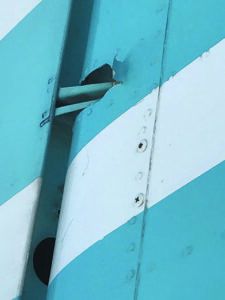
A prebuy exam is not a warranty. It is not any sort of guarantee by the maintenance tech that all of the shortcomings of the airplane have been identified. It’s not as involved as an annual inspection so, accept this fact up front. There will be squawks and issues with the airplane that you discover during the first year that weren’t caught on the prebuy. The prebuy is to catch the big, expensive stuff.
There are some companies that will manage prebuy exams; the big dog in the field is Savvy Aviation (www.savvyaviation.com). Full disclosure, I’ve known its proprietor, Mike Busch, for over 20 years and was a Savvy customer for managed maintenance as part of a group ownership of a T210 some years ago. In talking with Busch for this article he told me that his company’s experience has been that for airplanes built in the last 20 years, prebuy issues almost invariably result in just a renegotiation of the purchase price.
For older airplanes, the legacy fleet, prebuy issues are more likely to be so expensive that walking away is often the case. For example, corrosion, the bane of older airplanes, can mean the hot rod of your dreams, with the cool paint job and great avionics, has a negative value.
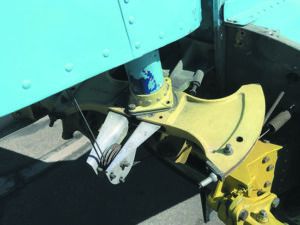
As part of the prebuy, fly the airplane. There is no substitute for your own reaction to the bird, plus, I messed up once and let someone else in a group ownership deal fly the airplane we bought. It was badly out of rig and took a lot of work to correct.
WHAT KIND OF DAMAGE?
That segues into the fact that all damage history is not created equally. Believe it or not, there’s bad—the most common kind—and there’s also good, which increases the value of the airplane.
A runway loss of control accident that results in repairs to the landing gear and airframe is an example of the bad kind of damage history—it diminishes the resale value of the aircraft. That’s a fact of aeronautical life. How much? That’s up to you as a buyer knowing that you’ll take a hit when you sell the airplane (although my research indicated that the longer since the damage, the smaller the hit), but more importantly, were the repairs done appropriately so that they aren’t going to require further work on the aircraft while you own it? That’s where your detective work pays off—you don’t want to find out after you’ve bought the airplane that the repairs were done poorly and are going to have to be redone.
That means that you and your tech will carefully assess all repairs and make a financial decision as to whether you want to renegotiate the price or walk away from the deal.
Read: What Are Your Remedies If Your Purchase Goes Bad?
NOT CREATED EQUALLY
In talking with Mike Busch, he pointed out that all damage history is not created equally. Some actually results in improving the aircraft. One example he gave was of a hangar rash incident in which the rudder is damaged and has to be replaced.
As Busch put it, “Once the new rudder is on and painted, there’s not an atom of damage left on that airplane. That means the buyer gets a perfectly good airplane for a little less money because it’s been tarnished with the ‘damage history’ brush.”
Busch and I also talked about prop strikes. The pilot taxis into a pothole and gets a prop strike. That means that insurance pays for the engine to be opened up, inspected and, at least, get some new parts—such as bearings—installed and a new prop hung. At the least, that’s betterment, but the price will be less than an airplane with no damage history.
Repairs to composite airplanes mean that the airplane is stronger than before the repair. Right now a number of Cirrus aircraft have had cracks in the floor of the rear cabin. That’s a structural element—and the repair makes it stronger than it was.
FRESH ANNUAL
“Fresh annual” and “fresh overhaul” are hooks to catch suckers. Both the A&Ps I spoke with and I have looked at way too many airplanes fresh out of an annual signed off by a for-real, FAA-certificated maintenance technician that turned out to have the wrong engine or wrong propeller installed, that had outstanding ADs that were going to be seriously expensive to comply with or had extensive corrosion, to give a few examples.
If you were going to sell your airplane would you put it through an absolutely meticulous, expensive annual where every single squawk was repaired? Now you’re thinking.
An annual should never be accepted in lieu of a prebuy exam—they are different animals. Plus, the tech doing the annual wasn’t doing it with your interests in mind.
In my opinion a “fresh annual” adds no value to an aircraft. A prebuy exam is still essential and if it goes we’ll and results in a sale, a wise owner will have the tech who did the prebuy keep going and finish an annual.
FRESH OVERHAUL
There are two types of engine overhauls: One is new limits—the good kind—the other is service limits—the not so good kind. On a new limits overhaul, each component has to meet new part limits specs or it cannot be installed. On a service limits overhaul, so long as a part isn’t worn past service limits it can be reused. Guess which one an owner is going to have done when selling the airplane. Plus, the owner makes a lot of choices regarding whether to replace accessories such as the starter and mags and hoses on an overhaul—new is not required.
After researching this article and looking at stats on infant mortality of engines just out of overhaul, my opinion is that an airplane with a “fresh overhaul” is actually worth less than one with 300-500 hours on the engine.
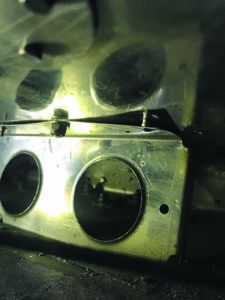
LIMITED TIME
Any purchase situation that puts a pressure on the potential buyer to act in a limited period of time (generally two weeks or less) should raise red flags. Preventing a buyer from doing the usual prepurchase due diligence actions is one of the most common techniques used by unscrupulous sellers.
If the seller is in a hurry, it’s time to either slow way, way down or walk away. Yes, airplanes will be sold out from under you—but you won’t have bought one of those that was dying of terminal corrosion.
FACTS OF AERONAUTICAL SALES LIFE
• There is no government agency that exists to protect consumers in the world of used aircraft sales. The FAA’s mandate is aviation safety, not consumer protection. In general, the FAA’s mandate does not extend to protecting a pilot who buys an airplane in crummy condition that was represented to be airworthy.
• Changes in the manner in which used aircraft are advertised, notably through internet marketing sites or electronic auctions, have not affected the need for a buyer to act assertively to find out the true condition of the aircraft before closing on a purchase.
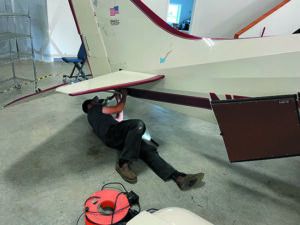
• In my opinion, the first step in the search process is joining any type club that exists for the machine that interests you. Then immerse yourself in the organization’s technical library and forums to learn the intimate details of owning one. There should be guidance for areas of concern on a prebuy exam as we’ll as what shops/maintenance techs in your area know the marque. Are there model years to stay away from, or ones that were much better than others? Is there a hidden, scary problem such as high-dollar spar inspections or shortage of critical parts?
• Flight training does not include training in how to own an airplane. Sellers know that a lot of pilots believe that because they have a pilot certificate they know all that’s necessary to own an airplane. Many of those pilots then discover that the cost of tuition in the school of aircraft ownership can be frightfully expensive.
• There are no fabulous deals on airplanes halfway across the country. If the airplane were in great shape and underpriced, a local would have bought it.
• A title search on the airplane is essential. If there are any liens on the airplane that cannot be removed at or before closing, it’s a deal breaker. No exceptions. An old lien that was not released will come back to haunt you.
• A full set of logbooks is worth 10 to 20 percent of the value of the airplane. Missing logbooks are not deal killers, but should reduce the price of the airplane. If the airplane is advertised with complete logbooks and the seller doesn’t produce all of the logs right away at the prebuy or admit that s/he lied to you about them, walk away.
You and your maintenance tech should go through the originals of the logs page by page. In addition to looking carefully at what work has been done—and euphemisms for major work such as wing or landing gear replacement—look for evidence that pages have been razored out.
• Get the entire airplane file from the FAA, all sales transactions and Form 337s and go through the material like Agatha Christie creating a detective novel. Where has the airplane lived? Corrosion country? What major repairs have been made to it?
• Find out the true useful load of the airplane before doing a prebuy.
CONCLUSION
Bottom line when it comes to finding the right airplane? You want one that doesn’t have hidden, expensive conditions. That’s what your detective work boils down to.
When it comes to making the right aircraft decision, knowledge is everything. Take your time and learn.


